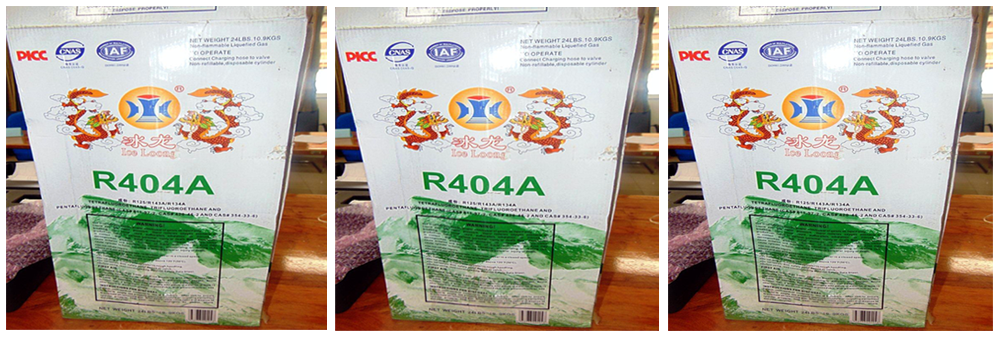The HCFC-22, or R-22, is a colorless gas commonly used as a refrigerant.

ODS’, such as the R-22, depletes the Earth’s stratospheric ozone layer allowing harmful ultraviolet radiation from reaching the Earth’s surface and causing damages to human health, ecosystems, both terrestrial and aquatic, biogeochemical cycles, air quality and materials.
During a physical check of this consignment, Customs Officers came across two gas cylinders of what appeared to be the R-404A product, according to the labels on the packages. R-404A is a Non-Ozone Depleting Substance (non-ODS) which is not harmful to the ozone layer. The suspicious thing about this importation was that the Importer declared this item to Customs as “Ammonia” gas, which does not relate to the labels on the packages. The Customs Officers therefore took the cylinders in for testing using an in-house Electronic Refrigerant Identifier and the results of the tests revealed that the cylinders actually contain R-22, not the declared “Ammonia” gas, nor the non-ODS R-404A as per the labels.
The Importer was therefore penalized by Customs for misclassification and for incorrect labeling of the controlled substance. The gas cylinders were further seized by Customs and handed over to the National Ozone Unit (NOU) at the Department of Environment for safe disposal.
Importers wishing to import any ozone depleting chemicals into Vanuatu are required to obtain an annual permit from the National Ozone Unit. These permits allow Importers to import only a certain amount of the ODS products into Vanuatu in a year. This is part of the global effort under the Montreal Protocol, which Vanuatu has been a party to since 1994, to phase out the production and consumption of such ozone depleting chemicals, including CFC’s, HCFC’s, halons and methyl bromide.
Since this particular Importer failed to obtain an Import Permit from The National Ozone Unit, they may further face a hefty penalty from the NOU under the Ozone Layer Protection Act of Vanuatu. During a similar interception in 2014, the Importer at the time was served a 500,000vt penalty by the NOU.
Customs undertakes annual trainings with the NOU on identifying methods of controlling and monitoring ODS at our borders. The trainings include learning of smuggling techniques, identification methods, safety measures and tariff classifications. It was obvious from this recent interception that such trainings were being put into good use. As a result of such joint efforts of the Environment department and Customs around the globe, the abundance of ODSs in the atmosphere is now declining. Studies revealed that should these commitments by the relevant agencies continue, the ozone layer is expected to recover by the middle of this century.





